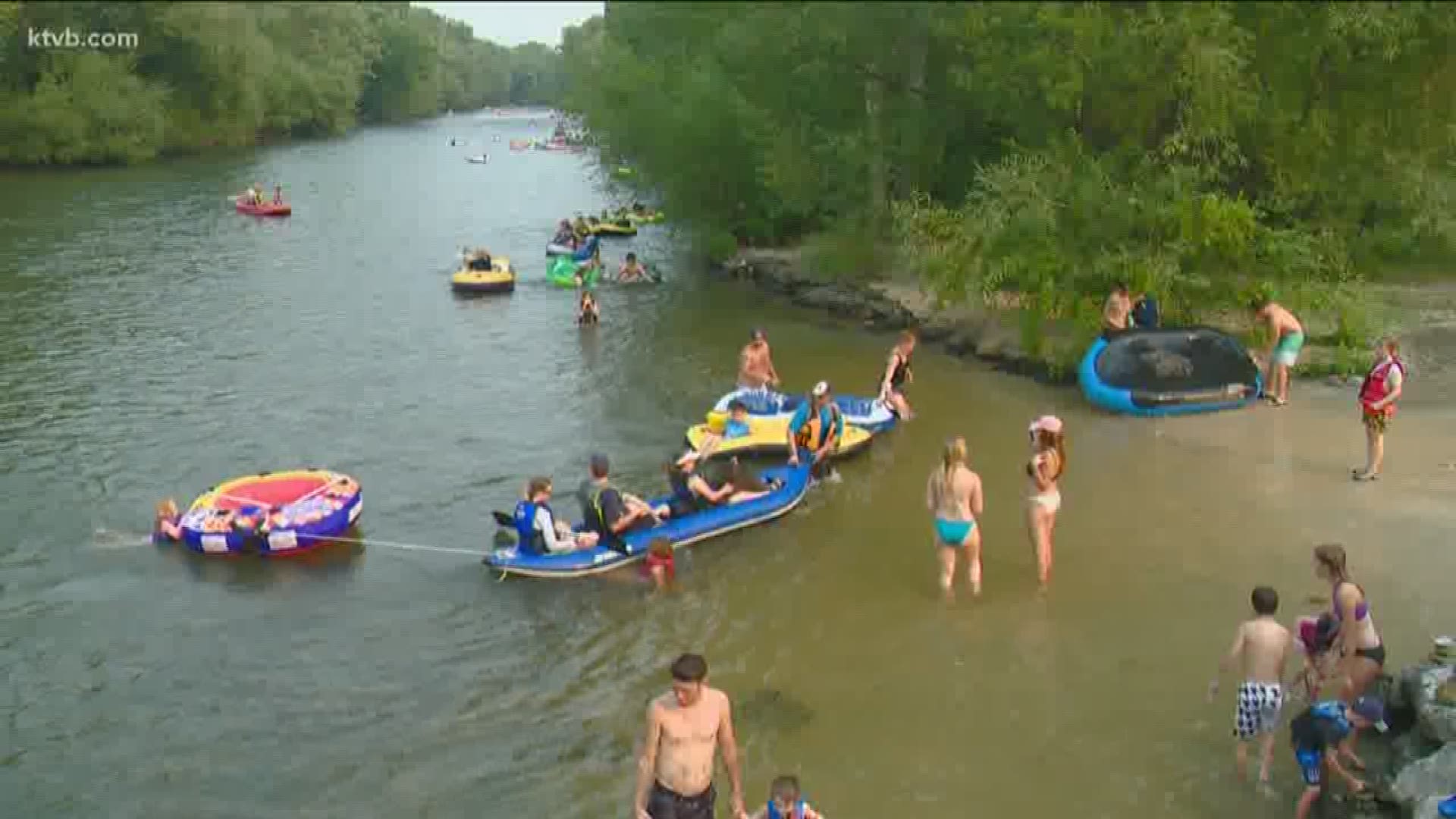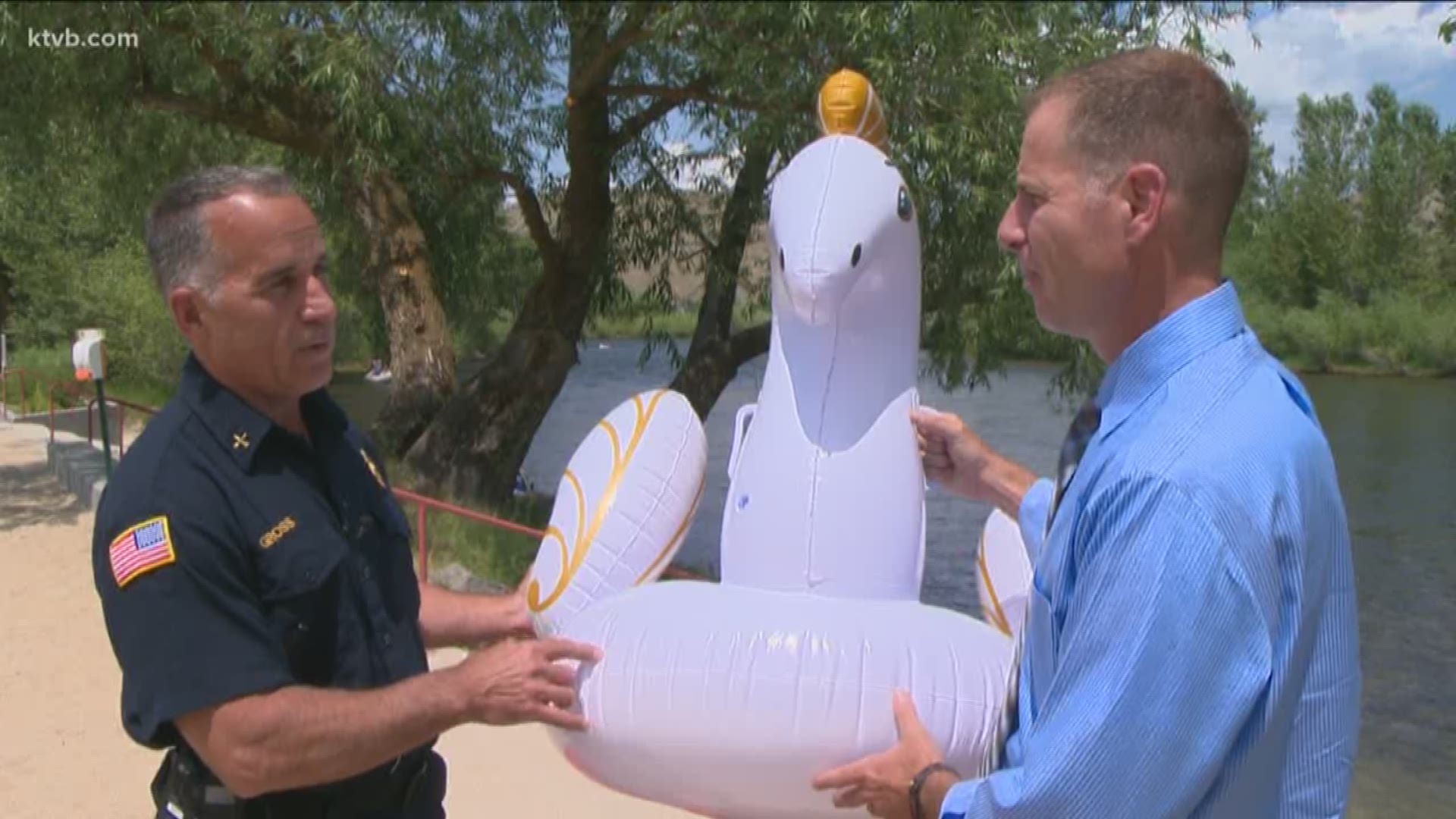BOISE, Idaho — It's no secret Boise is experiencing a population boom.
That means more people on the roads, more people on the hiking trails, and when temperatures soar, more people heading to the Boise River to cool off.
Officials say newcomers and native Idahoans alike need to be aware of some of the dangers of float season, and what they can do to stay safe on the water.
Preparation is key, according to Mike Dimmick, a district manager with Boise River Flood Control District #10.
"You are responsible for your own safety, so be aware of that before you go," he said.
Dimmick recommends scouting the area you plan to float or swim before you get into the water, keeping an eye out for any obstacles in the river. Fallen trees, branches, large rocks, and other features can quickly snag a raft or tube, he warned.
"A lot of times when folks are floating the river, they don't see the hazard until they're almost on it," he said.
Attracting hordes of floaters each summer, the six-mile stretch of river between Barber Park and Ann Morrison Park is by far the most popular section for recreators. It's also among the safest: Boise Fire crews clean out snags from the water ahead of time, and there are usually people close by to help or alert authorities if a floater gets into a jam on the water.
That's not the case on other sections of the river, Dimmick said. He pointed to a large toppled tree in the water less than a mile below the Glenwood Bridge as an example of the kind of obstacle floaters need to be aware of.
Don't be afraid to head for dry land rather than trying to navigate a tricky passage, he added.
"The best thing to do if you run into a diversion like this, is to as soon as you spot it, get out of the river. Scout it to see if there's an area to go through it. A lot of these diversions, there's not a safe area to go through it. So you'd wanna take your float, raft, intertube, whatever, and portage around the hazard."


